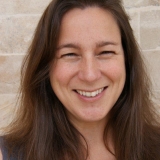Wetlands are commonly understood to have the capacity to reduce the loads of excess nutrients, pathogens, sediments, and other contaminants generated by various activities in their catchment areas. However, quantifying these “services” is difficult and most research in this field has concentrated on artificial treatment wetlands. Understanding the value of their water treatment characteristics, as well as the other services they provide, is increasingly recognized as essential to achieving a balance between conservation and activities that degrade or replace wetlands.
The authors collected samples at the outflow points of 100 subcatchment areas and measured the loads of nitrogen, dissolved phosphorus, and suspended solids, which were analyzed with respect to detailed spatial data on land cover and wetlands area. Wetlands play a significant role in the reduction of nitrates, nitrites, and ammonium, but not dissolved phosphorus or suspended solids. Estimated removal rates range from 307 to 9,505 kg N per ha-1 year-1, with an average of 1,594 ± 1,375 kg N per ha-1 year-1. Data from a number of water treatment works suggest that the cost of removal of ammonium nitrogen is in the order of ZAR 26 per kilogram. Applied to the wetlands in the study area—assuming wetlands do play a role in total phosphorus removal—this suggests that the average value of the water treatment service provided by wetlands in the study area is about ZAR 14,350 ± 12,385 ha-1 year-1. These values are high enough to compete with the alternative land uses that threaten their existence. The results suggest that wetlands should be given considerably more attention in land-use planning and regulation.
Files and links
Request a publication
Due to Copyright we cannot publish this article but you are very welcome to request a copy from the author. Please just fill in the information beneath.
